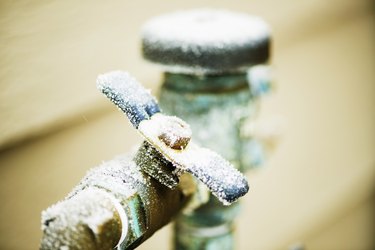Essential Approaches for Preventing Frozen Pipes in Winter
Essential Approaches for Preventing Frozen Pipes in Winter
Blog Article
Do you find yourself on the lookout for details around How to Prevent Your Pipes From Freezing?

Winter can ruin your pipes, especially by freezing pipes. Here's how to stop it from occurring and what to do if it does.
Introduction
As temperatures decrease, the risk of frozen pipelines increases, possibly leading to expensive repairs and water damage. Recognizing just how to prevent icy pipes is vital for house owners in cold environments.
Recognizing Frozen Pipelines
What creates pipes to freeze?
Pipes freeze when exposed to temperature levels listed below 32 ° F (0 ° C) for prolonged durations. As water inside the pipelines freezes, it broadens, taxing the pipe walls and possibly triggering them to break.
Threats and problems
Icy pipelines can bring about water supply disruptions, residential or commercial property damage, and expensive repair work. Burst pipes can flooding homes and create considerable architectural damage.
Indications of Frozen Pipeline
Identifying icy pipelines early can avoid them from bursting.
Just how to determine frozen pipes
Try to find lowered water circulation from faucets, uncommon odors or sounds from pipes, and noticeable frost on subjected pipes.
Avoidance Tips
Insulating susceptible pipelines
Wrap pipelines in insulation sleeves or use warmth tape to shield them from freezing temperatures. Focus on pipelines in unheated or exterior areas of the home.
Home heating techniques
Keep indoor spaces properly warmed, especially areas with pipes. Open cabinet doors to enable cozy air to circulate around pipes under sinks.
Safeguarding Exterior Pipes
Yard pipes and outside faucets
Separate and drain pipes yard hose pipes prior to winter. Install frost-proof spigots or cover outside taps with protected caps.
What to Do If Your Pipelines Freeze
Immediate activities to take
If you believe icy pipelines, maintain taps open to alleviate pressure as the ice melts. Utilize a hairdryer or towels soaked in hot water to thaw pipes gradually.
Long-Term Solutions
Structural modifications
Think about rerouting pipes far from outside walls or unheated areas. Add additional insulation to attics, basements, and crawl spaces.
Upgrading insulation
Purchase top quality insulation for pipes, attic rooms, and walls. Proper insulation aids preserve regular temperature levels and minimizes the danger of icy pipes.
Conclusion
Protecting against frozen pipelines requires aggressive measures and quick feedbacks. By comprehending the reasons, signs, and preventive measures, home owners can safeguard their pipes throughout cold weather.
6 Proven Ways to Prevent Frozen Pipes and Protect Your Home
Disconnect and Drain Garden Hoses
Before winter arrives, start by disconnecting your garden hoses and draining any remaining water. Close the shut-off valves that supply outdoor hose bibs and leave the outdoor faucet open to allow any residual water to drain. For extra protection, consider using faucet covers throughout the colder months. It’s also important to drain water from any sprinkler supply lines following the manufacturer’s directions.
Insulate Exposed Pipes
Insulating your pipes is an effective way to prevent freezing. Pipe insulation is readily available at home improvement stores and is relatively inexpensive. Pay close attention to pipes in unheated areas such as the attic, basement, crawl spaces, or garage. Apply foam insulation generously to create a buffer against the cold. You can also wrap your pipes in heat tape or thermostat-controlled heat cables for added warmth.
Seal Air Leaks
Inspect your home for any cracks or openings that could let in cold air. Seal any holes around the piping in interior or exterior walls, as well as the sill plates where your home rests on its foundation. Additionally, make sure to keep your garage door closed unless you’re entering or exiting. Leaving it open creates a significant air leak that can lead to frozen pipes.
Allow Warm Air Circulation
During cold snaps, it’s essential to allow warm air to circulate evenly throughout your home. Leave interior doors ajar to promote better airflow. Open kitchen and bathroom cabinets to help distribute heat consistently around the rooms. If you have small children or pets, be sure to remove any household chemicals or potentially harmful cleaners from open cabinets for safety.
Let Faucets Drip
A small trickle of water can make a big difference in preventing ice formation inside your pipes. When temperatures drop significantly, start a drip of water from all faucets served by exposed pipes. This continuous flow helps prevent the water from freezing. Additionally, running a few faucets slightly can relieve pressure inside the pipes, reducing the chances of a rupture if the water inside does freeze.
https://choateshvac.com/6-proven-ways-to-prevent-frozen-pipes-and-protect-your-home/

Hopefully you enjoyed reading our excerpt about How to prepare your home plumbing for winter weather. Thanks a lot for taking time to browse our piece of content. Do you know somebody else who is occupied with the niche? Feel free to promote it. We treasure reading our article about 6 Ways to Prevent Frozen Pipes.
Call Today Report this page